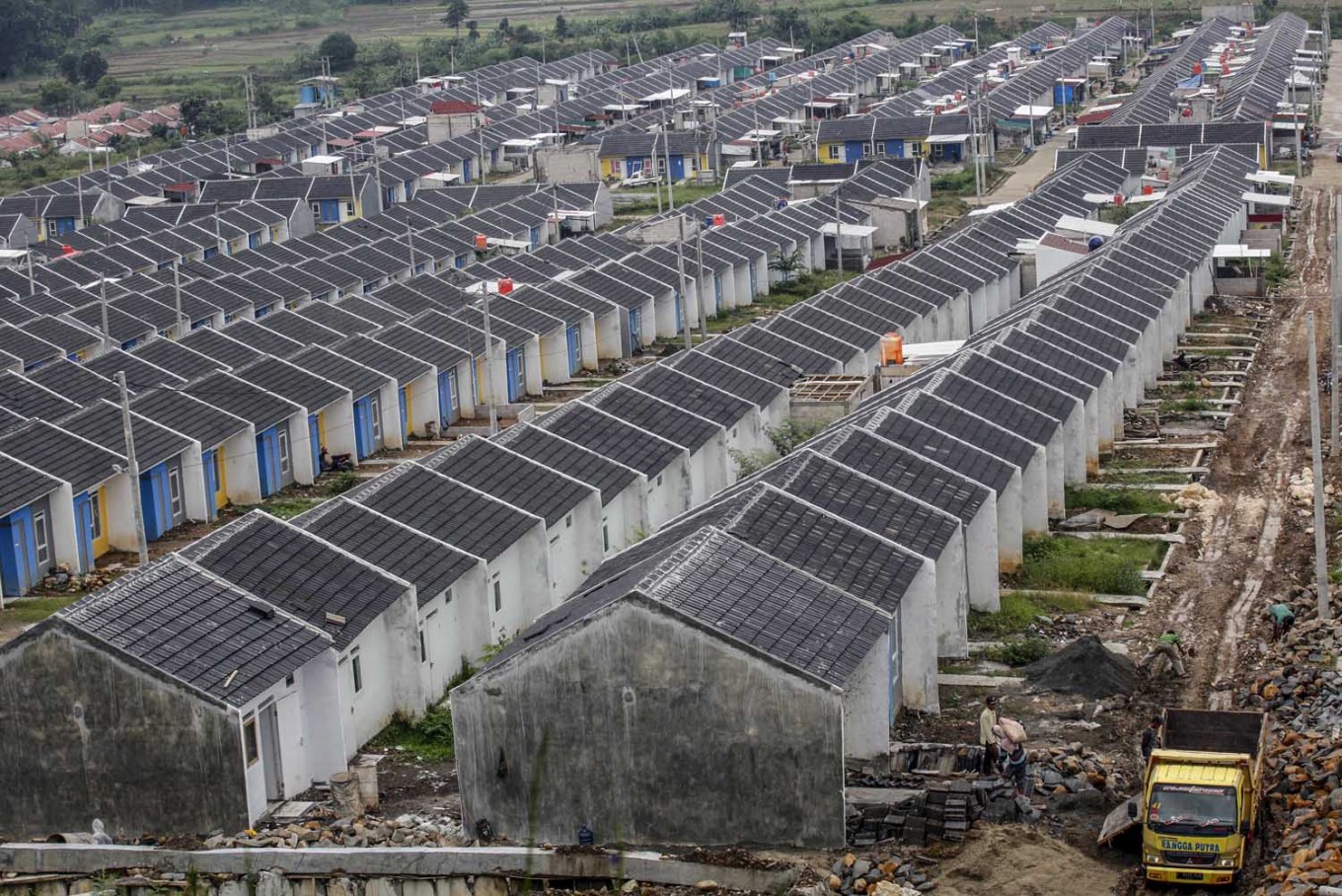Popular Reads
Top Results
Can't find what you're looking for?
View all search resultsPopular Reads
Top Results
Can't find what you're looking for?
View all search resultsMobile app aims to eliminate fraud in disbursement of subsidized housing loans
The application, launched in Dec. 19, 2019, has so far helped the government disburse loans worth Rp 861.43 billion (US$51.86 million) for the construction of 8,550 houses for low-income families.
Change text size
Gift Premium Articles
to Anyone
T
he government is using an application called SiKasep to prevent fraud in its subsidized housing loans programs by connecting property developers and prospective homebuyers.
According to a Housing Financing Management Agency (PPDPP) statement released on Thursday, scammers have been selling substandard houses on behalf of the government's Housing Financing Liquidity Facility (FLPP) and other subsidized housing programs and misusing applicants’ personal information, among other crimes.
The application, launched in Dec. 19, 2019, has so far helped the government disburse loans worth Rp 861.43 billion (US$51.86 million) for the construction of 8,550 houses for low-income families under the FLPP. It now has 42,923 users and another 35,116 users are currently being verified.
"With the SiKasep application, it will be easier for the government to oversee the [loan] distribution or housing needs with data directly sourced from the public, which can also be used as guidelines for policy-making," the agency wrote, adding that it also prevented an oversupply of houses in unwanted locations.
The new application is part of efforts to bolster President Joko “Jokowi” Widodo’s promise of building around 1 million houses a year. The target, in place since 2015, aims to reduce the country’s housing backlog, especially for lower-income families.
Read also: State mortgage provider to disburse Rp 1.7t for low-cost houses
Some 4.8 million houses have been constructed since then; 699,770 built in 2015, 805,169 houses in 2016, 904,758 houses in 2017, 1.13 million houses in 2018 and more than 1.25 million houses in 2019. The government aims to build 1.25 million houses this year.
The FLPP itself was initially established to provide loans to civil servants, military personnel, police officers and private employees with a monthly income no higher than Rp 8 million.
It is also in line with the government's move to disburse Rp 1.5 trillion in subsidies for purchases of houses for low-income Indonesians in February as a part of a Rp 10.3 trillion stimulus package to cushion the impacts of COVID-19. Particularly, Rp 800 billion will be used for interest subsidies for loan installments and Rp 700 billion for down payment subsidies (SBUM).
However, property developers expressed concerns in late January over “thinning” funds allocated to the FLPP, as they bank on public housing programs amid a broad-based slowdown in the property sector.
The 2020 budget for loans under the FLPP amounts to Rp 11 trillion, which is enough to build only 97,700 houses — much lower than the Rp 29 trillion needed to fund the construction of at least 260,000 houses this year, the group said.
But PPDPP president director Arief Sabaruddin refuted the group’s claims in January about a “thinning budget” as he said the allocated budget for the scheme had steadily increased.
Read also: Property developers express concern over ‘thinning’ housing loan subsidy
The agency’s data shows that the budget this year had increased to Rp 11 trillion from Rp 7.1 trillion in 2019 and Rp 6.01 trillion in 2018. However, actual spending has declined because of issues to do with “administrative preparedness” and “incomplete documents”, Arief said.
“We all have this mindset of increasing [the housing quota], including businesspeople. What we have to consider now is how to solve not only surface-level problems but also their roots, which are limited financing sources,” Arief said.
“That’s why we have to think about ways to find other financing sources for a long-term solution.”










